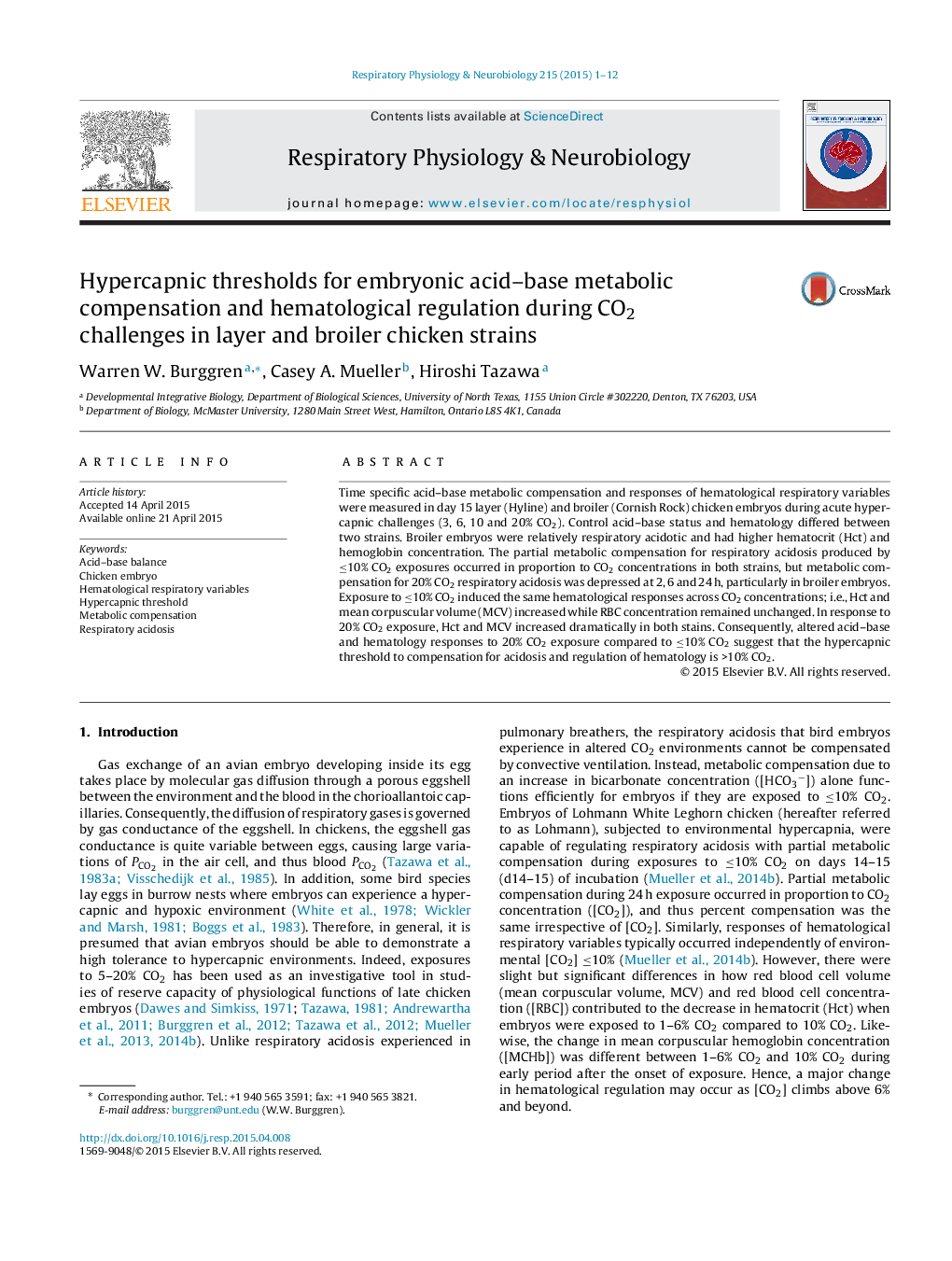| Article ID | Journal | Published Year | Pages | File Type |
|---|---|---|---|---|
| 2846852 | Respiratory Physiology & Neurobiology | 2015 | 12 Pages |
•D15 layer and broiler chick embryos were exposed to 3, 6, 10 and 20% CO2 for 1 day.•Time specific responses of acid–base and hematological variables were studied.•Control acid–base and hematology significantly differed between two strains.•Exposures to ≤10 and 20% CO2 induced different responses in acid base and hematology.•Altered responses to 20% CO2 suggest hypercapnic threshold existing >10% CO2.
Time specific acid–base metabolic compensation and responses of hematological respiratory variables were measured in day 15 layer (Hyline) and broiler (Cornish Rock) chicken embryos during acute hypercapnic challenges (3, 6, 10 and 20% CO2). Control acid–base status and hematology differed between two strains. Broiler embryos were relatively respiratory acidotic and had higher hematocrit (Hct) and hemoglobin concentration. The partial metabolic compensation for respiratory acidosis produced by ≤10% CO2 exposures occurred in proportion to CO2 concentrations in both strains, but metabolic compensation for 20% CO2 respiratory acidosis was depressed at 2, 6 and 24 h, particularly in broiler embryos. Exposure to ≤10% CO2 induced the same hematological responses across CO2 concentrations; i.e., Hct and mean corpuscular volume (MCV) increased while RBC concentration remained unchanged. In response to 20% CO2 exposure, Hct and MCV increased dramatically in both stains. Consequently, altered acid–base and hematology responses to 20% CO2 exposure compared to ≤10% CO2 suggest that the hypercapnic threshold to compensation for acidosis and regulation of hematology is >10% CO2.
